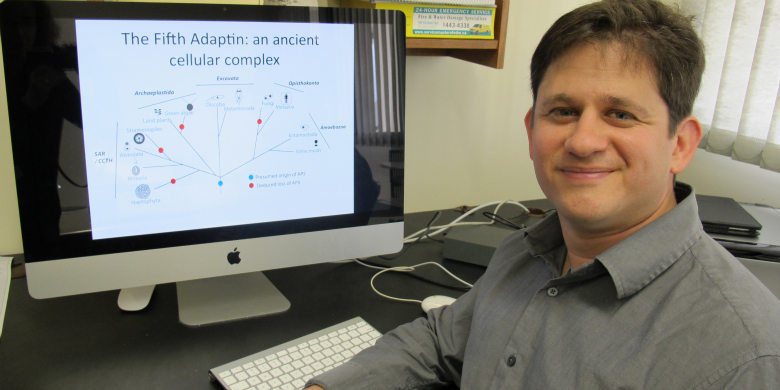Newly discovered cell properties could revolutionize disease research

Biologists at the University of Alberta accidentally stumbled upon a newly discovered cell property that could change the way scientists approach disease research and how we look for cures.
The study was published in early October in the Public Library of Science Biology, by evolutionary biologist Joel Dacks and his team of researchers. What Dacks and his co-authors found was a never before seen fifth avenue used by cells for moving materials and communicating with other parts of the cell and body. These pathways, called adaptins, are protein complexes that shuttle molecules, proteins, and other items around the cell; they are key to the operation of the many, many processes that keep our bodies up and running on a daily basis.
The biologists discovered this fifth pathway when performing research on a soil amoeba, a tiny one-celled organism. Dacks’ evolutionary biology scrutiny showed that the fifth adaptin exists in human cells, plant cells, and in amoebas, which means it evolved several billion years ago.
While Dacks’ evolutionary biology expertise was enough to date the adaptin, he needed the help of medical researcher Margaret Robinson at the University of Cambridge to investigate the implications of the adaptin for human health. Robinson’s work has shown that the functioning of the adaptin is directly related to some known hereditary diseases, such as spastic paraplegia, which eventually results in the loss of mobility.
The discovery could drastically change the way scientists study the other adaptin pathways, and how they approach neurological disease research in general. As you may imagine, it would have been impossible for scientists to pinpoint the source of disease if they weren’t even aware of the existence of the pathway which regulated the processes involved in the disease. Additional research into the fifth adaptin could reveal information about diseases that have stumped scientists for decades, such as Alzheimer’s and Huntington’s Disease. The tragic effects of these neurological disorders and the previous lack of breakthrough science surrounding them further highlights the weight of this discovery.
Along with the processes regulated by the newly discovered fifth adaptin, scientists will also be able to use the discovery to further understand the other four adaptins and the processes they are involved in. Scientists will be able to have a better understanding of the hereditary and environmental factors involved in degenerative diseases, whose causes and risk factors have puzzled researches for some time now.

If this new discovery actually could cure millions of people, Big pharma would forbid it, a cured person doesn´t need painkillers etc. Money, money, money…